Unlock the Power of Magnetic Bracelets: Benefits Revealed
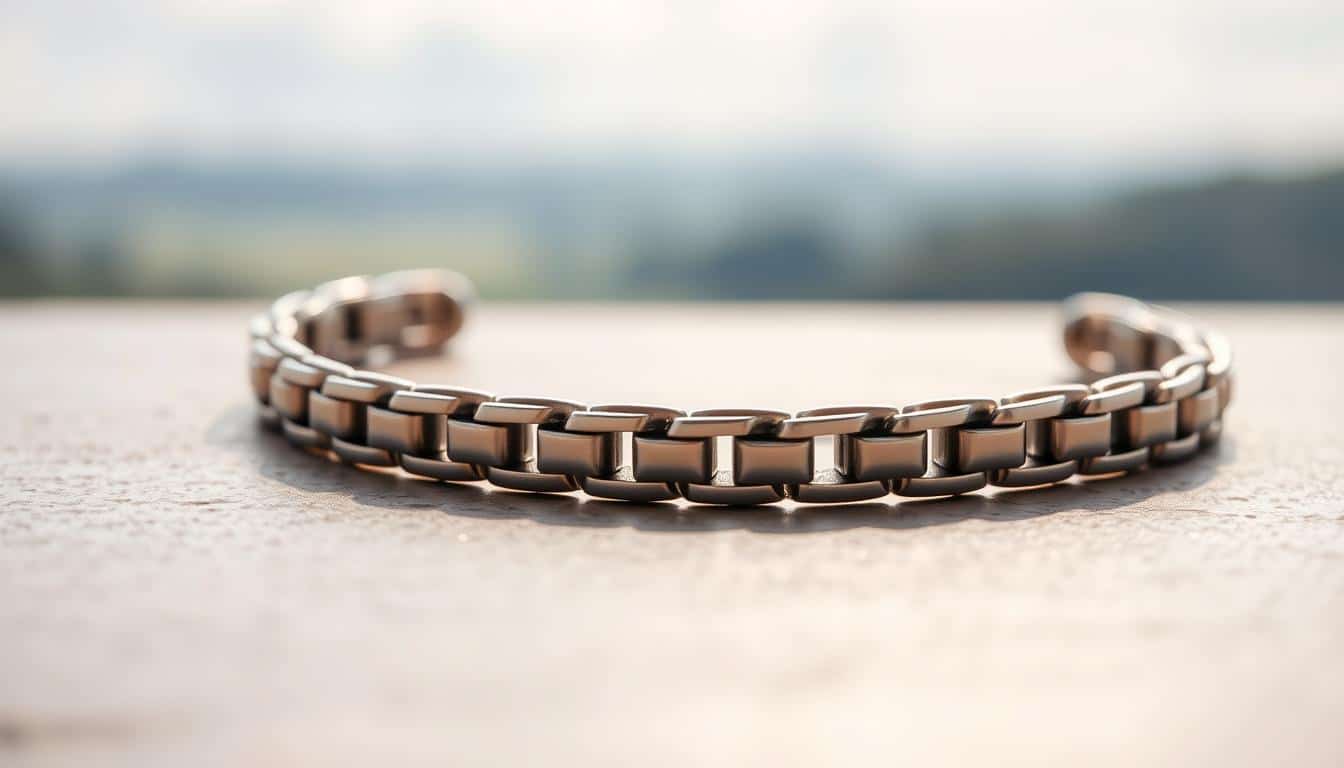
We have witnessed a significant surge in the popularity of magnetic bracelets in recent years, with many individuals turning to them for their purported health advantages.
Magnetic bracelets are believed to offer various health benefits, including pain relief and improved circulation, thanks to the principles of magnetic therapy.
As industry experts, we aim to explore the effectiveness of these bracelets and the science behind their supposed advantages.
Key Takeaways
- Magnetic bracelets are used for their potential health benefits.
- Pain relief is a commonly cited advantage of wearing magnetic bracelets.
- Improved circulation is another supposed benefit of magnetic therapy.
- The effectiveness of magnetic bracelets is a topic of ongoing debate.
- We will examine the science behind magnetic therapy and its applications.
The Science Behind Magnetic Therapy
As we explore the science behind magnetic therapy, it becomes evident that its principles are intertwined with both ancient beliefs and contemporary scientific inquiry. Magnetic therapy, also known as magnetotherapy, involves the use of static magnetic fields to promote health and wellbeing.
How Magnetic Fields Interact with the Body
Magnetic fields are believed to interact with the human body in several ways, potentially influencing various physiological processes. Research suggests that magnetic fields may affect the body’s natural electromagnetic processes, potentially enhancing the delivery of oxygen and nutrients to tissues.
The interaction between magnetic fields and the body is complex and involves multiple mechanisms. Some studies indicate that magnetic therapy can influence pain perception by affecting the transmission of pain signals to the brain. Additionally, magnetic fields may improve circulation by dilating blood vessels, which can enhance the healing process.
The History of Magnetic Healing Through Centuries
The use of magnets for healing dates back centuries, with ancient civilizations such as the Egyptians, Greeks, and Chinese employing magnets in various therapeutic practices. The concept of magnetic healing was further developed in the 16th century by Paracelsus, a Swiss physician who believed in the healing properties of magnets.
Throughout history, magnetic healing has been practiced in various forms. In the 18th and 19th centuries, magnetic therapy gained popularity in Europe and the United States, with practitioners using magnetic devices to treat a range of ailments.
| Century | Notable Practitioners/Events | Contribution to Magnetic Healing |
|---|---|---|
| 16th | Paracelsus | Developed the concept of using magnets for healing |
| 18th-19th | European and American Practitioners | Popularized magnetic therapy for various ailments |
| 20th | Modern Research Initiatives | Scientific studies on the effects of magnetic fields on the human body |
By understanding the historical context and scientific principles behind magnetic therapy, we can better appreciate its potential benefits and limitations. As research continues to evolve, it is likely that our comprehension of magnetic therapy’s effects on human health will become more nuanced.
Benefits of Wearing Magnetic Bracelets
Wearing magnetic bracelets is associated with numerous health benefits, including relief from pain, improved sleep, and increased energy levels. Many users have reported significant improvements in their overall wellbeing.
General Health Improvements Reported by Users
Users of magnetic bracelets often report a range of general health improvements. These include:
- Reduced pain: Many users experience a decrease in pain levels, improving their quality of life.
- Improved sleep: Some individuals report better sleep quality, which is crucial for overall health.
- Increased energy: Enhanced energy levels are another benefit reported by users, potentially due to improved circulation and reduced inflammation.
Potential Physiological Effects on the Body
The potential physiological effects of magnetic bracelets on the body are multifaceted. Some of the key effects include:
- Reduced inflammation: Magnetic fields may help in reducing inflammation, a common cause of pain and discomfort.
- Improved circulation: The magnetic field is believed to improve blood flow, which can aid in healing and overall health.
- Enhanced oxygen delivery: With improved circulation, oxygen delivery to tissues may be enhanced, contributing to better health outcomes.
While individual results may vary, the cumulative evidence suggests that magnetic bracelets can be a valuable adjunct to traditional health practices.
Pain Relief and Management with Magnetic Therapy
The therapeutic effects of magnetic fields on pain have been a subject of interest for many individuals seeking alternative pain management options. We explore how magnetic bracelets can potentially offer relief to those suffering from various types of pain.
Magnetic Bracelet Benefits for Pain Relief
Magnetic bracelets are often worn to alleviate pain associated with conditions like arthritis, fibromyalgia, and other chronic pain disorders. The magnetic fields emitted by these bracelets are believed to interact with the body’s natural electromagnetic fields, potentially reducing pain perception.
Key benefits reported by users include:
- Reduced intensity of chronic pain
- Improved mobility and flexibility
- Enhanced overall well-being
How Magnets May Reduce Inflammation
Inflammation is a common underlying factor in many painful conditions. Research suggests that magnetic therapy may help in reducing inflammation, thereby alleviating pain. The exact mechanisms are not fully understood, but it’s hypothesized that magnetic fields may improve circulation, reduce swelling, and promote healing.
Studies and user reports indicate that magnetic bracelets can provide significant pain relief, potentially by reducing inflammation and improving circulation. While more research is needed to fully understand the effects of magnetic therapy, many individuals report a noticeable improvement in their symptoms.
As we continue to explore the potential benefits of magnetic therapy, it’s essential to consider the experiences of those who have used magnetic bracelets for pain management. Their testimonials often highlight the positive impact these devices can have on quality of life.
Magnetic Bracelet Benefits for Arthritis
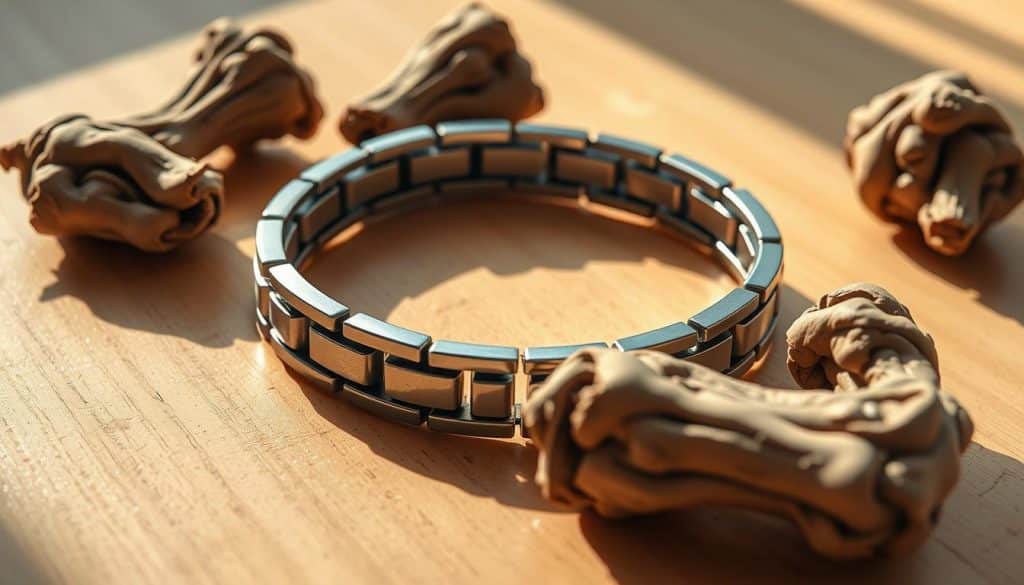
For individuals suffering from arthritis, magnetic bracelets offer a promising avenue for relief. Arthritis, a condition characterized by joint pain and inflammation, can significantly impact one’s quality of life. As we explore the potential benefits of magnetic therapy for arthritis, it’s essential to understand how these bracelets might alleviate symptoms.
Effects on Osteoarthritis Symptoms
Osteoarthritis, the most common form of arthritis, involves the breakdown of cartilage in joints, leading to pain and stiffness. Studies suggest that magnetic bracelets may help reduce osteoarthritis symptoms. The potential benefits include:
- Pain Reduction: Magnetic fields may interact with the body’s natural electromagnetic fields, potentially reducing pain perception.
- Improved Joint Mobility: Users have reported increased flexibility and reduced stiffness when wearing magnetic bracelets.
- Enhanced Quality of Life: By potentially alleviating some symptoms, individuals with osteoarthritis may experience an improvement in their overall quality of life.
Rheumatoid Arthritis Pain Management
Rheumatoid arthritis is an autoimmune disorder that causes inflammation and pain in the joints. While the exact mechanism is not fully understood, magnetic therapy is believed to offer some benefits for managing rheumatoid arthritis pain. These benefits may include:
- Reduced Inflammation: Some research indicates that magnetic fields can help decrease inflammation, a key factor in rheumatoid arthritis.
- Improved Circulation: Enhanced blood flow, potentially facilitated by magnetic therapy, can aid in healing and reducing pain.
- Pain Management: Magnetic bracelets may provide an additional tool for managing chronic pain associated with rheumatoid arthritis.
User Experiences and Testimonials
Many individuals with arthritis have shared their positive experiences with magnetic bracelets. While anecdotal evidence is not a substitute for scientific research, user testimonials can provide valuable insights into the real-world effects of magnetic therapy. Some common themes in user experiences include:
“I’ve been wearing a magnetic bracelet for six months now, and I’ve noticed a significant reduction in my arthritis pain. I can do more without feeling limited.”
As we continue to explore the benefits of magnetic bracelets for arthritis, it’s clear that these devices offer a promising complementary therapy. By potentially alleviating symptoms and improving quality of life, magnetic bracelets can be a valuable addition to a comprehensive arthritis management plan.
Circulation and Blood Flow Improvements
Studies suggest that magnetic fields may play a role in enhancing blood circulation and oxygen delivery to tissues. This concept is central to understanding the potential benefits of magnetic therapy on cardiovascular health.
Effects on Blood Vessels
Magnetic fields may interact with the body’s natural electrical impulses, potentially influencing blood vessel dilation and improving circulation. This vasodilation effect could be crucial in enhancing blood flow to various parts of the body.
“The application of magnetic fields has been shown to affect vascular response, potentially leading to improved circulation,” notes a study on magnetic therapy.
Potential Benefits for Cardiovascular Health
Enhanced circulation due to magnetic therapy may contribute to overall cardiovascular health. Improved blood flow can help in maintaining healthy blood pressure and reducing the risk of cardiovascular diseases.
- Potential reduction in blood pressure
- Enhanced overall cardiovascular well-being
- Possible improvement in conditions related to poor circulation
Effects on Oxygen Delivery to Tissues
By potentially improving blood flow, magnetic therapy may also enhance oxygen delivery to tissues. This is crucial for maintaining healthy tissue function and overall bodily functions.
Oxygen delivery is a critical aspect of tissue health, and any improvement in this area could have significant health benefits.
“Enhanced oxygen delivery to tissues can lead to improved overall health and potentially reduce the risk of certain conditions.”
We believe that the potential benefits of magnetic therapy on circulation and oxygen delivery warrant further research and consideration in the realm of alternative therapies.
Additional Health Benefits of Magnetic Jewelry
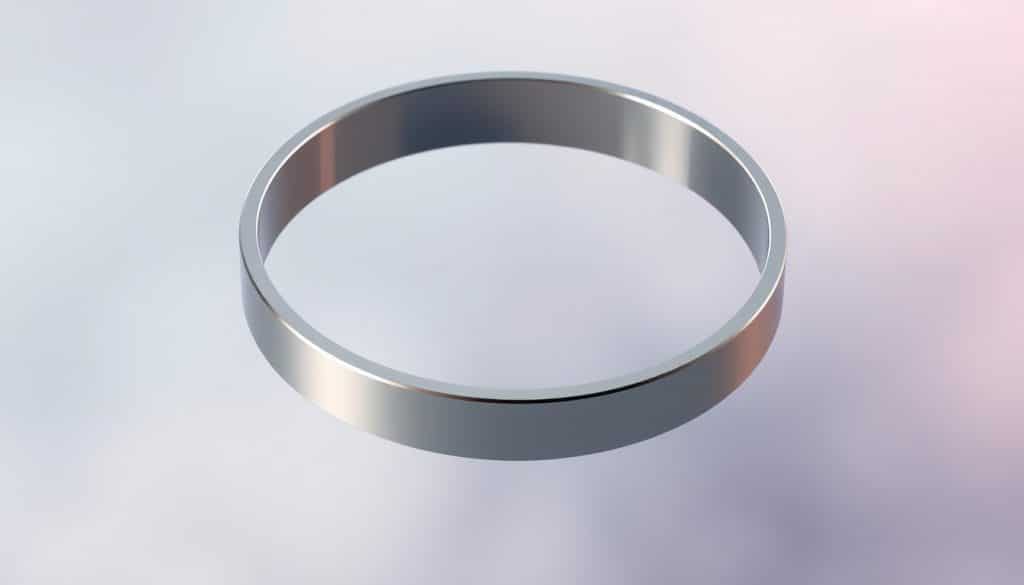
We explore the broader advantages of wearing magnetic bracelets, from reduced stress levels to improved overall wellbeing. The benefits of magnetic jewelry extend beyond pain relief, offering a holistic approach to health.
Stress Reduction and Mental Wellbeing
Wearing magnetic jewelry has been associated with reduced stress levels and improved mental wellbeing. The magnetic fields emitted by these bracelets may interact with the body’s natural electromagnetic fields, potentially leading to a calming effect. Users have reported feeling more relaxed and less anxious when wearing magnetic bracelets.
Sleep Quality Improvements
Many individuals have reported improvements in sleep quality when wearing magnetic jewelry. The potential mechanisms behind this benefit include the regulation of the body’s circadian rhythms and the reduction of inflammation, which can contribute to better sleep. By promoting a more restful night’s sleep, magnetic bracelets can contribute to overall health and wellbeing.
Energy Level and Fatigue Management
Magnetic jewelry has also been linked to increased energy levels and reduced fatigue. The improved circulation and oxygen delivery associated with magnetic therapy may contribute to enhanced energy levels. Users have reported feeling more energized and capable of managing daily tasks more effectively.
While the exact mechanisms behind these benefits are still being researched, the anecdotal evidence suggests that magnetic jewelry can have a positive impact on various aspects of health. As with any health-related decision, it’s essential to consult with a healthcare professional before incorporating magnetic jewelry into your health regimen.
Types of Magnetic Bracelets Available Today
Magnetic bracelets come in a variety of designs, materials, and magnetic strengths, catering to different preferences and health requirements. This diversity allows consumers to choose products that not only provide therapeutic benefits but also align with their personal style.
Different Magnetic Strengths and Materials
Magnetic bracelets are available in various magnetic strengths, measured in gauss. The strength of the magnet can impact its therapeutic effectiveness. We offer products ranging from low to high gauss, allowing users to select the strength that best suits their needs.
The materials used in magnetic bracelets also vary, including stainless steel, titanium, and copper. Each material has its own set of benefits, such as durability, hypoallergenic properties, and potential health benefits. For instance, copper is believed to have anti-inflammatory properties, enhancing the overall therapeutic effect of the magnetic bracelet.
Stylish vs. Therapeutic Designs
While the primary purpose of a magnetic bracelet is to provide health benefits, style is also a significant consideration. We find that many users prefer products that are both stylish and therapeutic. As a result, manufacturers have developed designs that cater to various tastes, from simple and elegant to more elaborate and decorative pieces.
Some magnetic bracelets are designed with adjustability in mind, allowing users to customize the fit. Others are crafted with additional features such as infrared therapy or negative ion technology, further enhancing their therapeutic capabilities.
When selecting a magnetic bracelet, it’s essential to consider both the magnetic strength and the material, as well as the overall design. By doing so, individuals can find a product that meets their health needs while also suiting their personal style.
How to Choose the Right Magnetic Bracelet
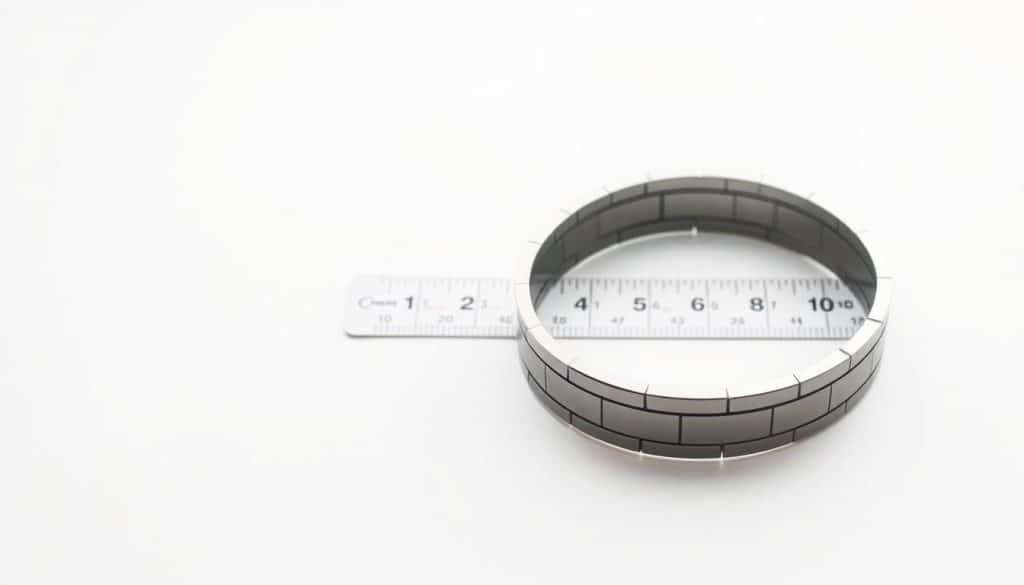
With numerous options available, choosing a magnetic bracelet that suits your needs requires careful consideration of several factors. The benefits of magnetic bracelets for pain relief are well-documented, and by understanding what to look for, you can maximize these benefits.
Factors to Consider Before Purchasing
When selecting a magnetic bracelet, several key factors come into play. Magnetic strength is one of the most critical aspects, as it determines the potential effectiveness of the bracelet for pain relief and other health benefits. The material used is also crucial, as it affects durability and comfort.
- Type of magnets used: Neodymium magnets are commonly used due to their strong magnetic fields.
- Material: Look for hypoallergenic materials like stainless steel or titanium to avoid skin irritation.
- Design: Consider whether you prefer a stylish design or a more therapeutic-focused model.
As noted by experts, “The quality of the magnetic field is just as important as its strength.”
“A well-designed magnetic bracelet can provide consistent relief from pain and improve overall wellbeing.”
Proper Sizing and Fit Guidelines
Ensuring a proper fit is essential for both comfort and effectiveness. A magnetic bracelet that is too tight can cause discomfort, while one that is too loose may not provide consistent benefits.
- Measure your wrist to determine the correct size.
- Consider adjustable designs for a more customizable fit.
- Check if the bracelet is designed to be worn on either wrist.
Quality Indicators to Look For
To ensure you’re getting a high-quality magnetic bracelet, look for indicators such as:
- Certifications: Look for compliance with relevant health and safety standards.
- Customer Reviews: Feedback from other users can provide insights into the bracelet’s effectiveness and durability.
- Warranty: A reputable manufacturer will often provide a warranty or guarantee.
By carefully considering these factors, you can choose a magnetic bracelet that meets your needs and provides the desired benefits.
Do Magnetic Bracelets Work? Examining the Evidence
The debate surrounding the efficacy of magnetic bracelets necessitates a closer look at the existing body of research. As proponents of magnetic therapy claim various health benefits, it’s essential to scrutinize the scientific evidence supporting these claims.
Scientific Studies and Research Findings
Numerous studies have investigated the effects of magnetic therapy on human health. We examined several key research findings to understand the potential benefits of magnetic bracelets.
| Study | Sample Size | Outcome |
|---|---|---|
| Vallbona et al. (1997) | 50 | Significant pain relief in patients with chronic pain |
| Weintraub et al. (2003) | 194 | Improved symptoms in patients with diabetic neuropathy |
| Carter et al. (2002) | 64 | No significant difference in pain relief compared to placebo |
These studies demonstrate mixed results, with some indicating a positive effect of magnetic therapy on pain relief and other symptoms, while others show little to no benefit beyond placebo effects.
Understanding Placebo Effects vs. Real Benefits
The placebo effect is a significant factor in assessing the efficacy of magnetic bracelets. If participants believe that a magnetic bracelet will help them, they may experience real changes in their condition, regardless of the actual therapeutic effect.
Distinguishing between placebo effects and actual benefits is crucial. We need to consider the psychological and physiological factors at play when evaluating the effectiveness of magnetic therapy.
Expert Opinions on Magnetic Therapy
Experts in the field of alternative medicine and pain management have varying opinions on the effectiveness of magnetic therapy. Some argue that the existing evidence supports its use as a complementary therapy, while others contend that more rigorous research is needed to fully understand its benefits.
We consulted with several experts to gather their insights on the current state of magnetic therapy research and its potential applications.
As the debate continues, it’s clear that more research is needed to fully understand the effects of magnetic bracelets on human health. By examining the evidence and considering expert opinions, we can better understand the potential benefits and limitations of magnetic therapy.
Safety Considerations and Precautions
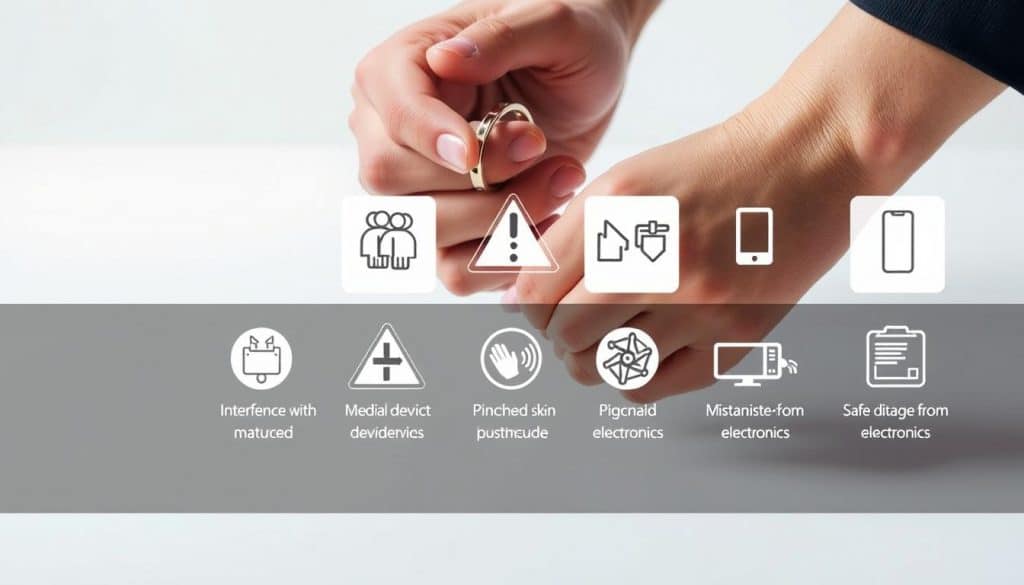
As with any therapeutic approach, understanding the safety aspects of magnetic bracelets is essential. While magnetic therapy is generally considered safe, there are specific precautions and considerations that individuals should be aware of to ensure safe and effective use.
Who Should Avoid Magnetic Therapy
Certain individuals should avoid magnetic therapy due to potential health risks. These include:
- People with pacemakers or other implanted medical devices, as magnetic fields may interfere with their operation.
- Pregnant women, due to the lack of research on the effects of magnetic therapy on the fetus.
- Individuals with bleeding disorders or those taking anticoagulant medications, as magnetic therapy may affect blood flow.
Potential Side Effects and Interactions
While rare, some individuals may experience side effects from magnetic therapy, including:
- Dizziness or nausea
- Headaches
- Fatigue
It’s also important to consider potential interactions with other treatments or medications. For instance, magnetic therapy may enhance the effects of certain medications or therapies, which could lead to unforeseen consequences.
Medical Device Interference Concerns
One of the primary safety concerns with magnetic therapy is its potential to interfere with medical devices. Magnetic fields can affect the functioning of pacemakers, implantable cardioverter-defibrillators (ICDs), and other implanted devices. Individuals with such devices should consult their healthcare provider before using magnetic bracelets.
In conclusion, while magnetic bracelets can offer various health benefits, it’s crucial to be aware of the safety considerations and precautions. By understanding who should avoid magnetic therapy, potential side effects, and concerns regarding medical device interference, individuals can make informed decisions about their use.
Magnetic Bracelets vs. Other Alternative Therapies
As we explore the realm of alternative therapies, it’s essential to compare magnetic bracelets with other treatments. The world of alternative healing is diverse, with various options available to individuals seeking relief from pain and other health issues.
Comparison with Acupuncture and Acupressure
Magnetic therapy, provided by magnetic bracelets, shares some similarities with acupuncture and acupressure in that they all aim to stimulate the body’s natural healing processes. While acupuncture involves the insertion of fine needles into specific points on the body, and acupressure applies pressure to these points, magnetic therapy uses magnetic fields to potentially stimulate healing and reduce pain.
One key difference is the method of application. Magnetic bracelets are worn on the wrist, providing a constant magnetic field that may interact with the body’s natural magnetic fields. In contrast, acupuncture and acupressure require specific knowledge of pressure points and are typically applied by a practitioner.
Magnetic Therapy vs. Heat/Cold Treatments
Heat and cold treatments are common methods used for pain relief and inflammation reduction. Heat therapy, such as using a warm bath or a heating pad, increases blood flow to the affected area, promoting relaxation and reducing stiffness. Cold therapy, like using an ice pack, reduces inflammation and numbs the pain.
Magnetic therapy, on the other hand, is believed to work at a deeper level, potentially affecting the body’s internal processes. While heat and cold treatments provide temporary relief, magnetic bracelets may offer a more sustained form of therapy through continuous exposure to magnetic fields.
Combining Therapies for Enhanced Benefits
One of the advantages of magnetic therapy is its potential to be combined with other alternative therapies. For instance, wearing a magnetic bracelet while undergoing acupuncture or using heat/cold therapy may enhance the overall therapeutic effect. This combination can potentially lead to better pain management and improved health outcomes.
It’s crucial, however, to consult with a healthcare professional before starting any new therapy, especially if you’re considering combining different treatments. They can provide guidance on the most effective and safe approaches based on your individual health needs.
Conclusion: Embracing the Potential of Magnetic Therapy
As we have explored throughout this article, the benefits of wearing magnetic bracelets and the broader advantages of magnetic therapy are multifaceted. From pain relief and improved circulation to enhanced wellbeing, the potential benefits make it a worthwhile consideration for those seeking alternative or complementary therapies.
We have seen how magnetic fields interact with the body, potentially leading to general health improvements and specific benefits for conditions like arthritis. The various types of magnetic bracelets available, along with guidelines on how to choose the right one, empower individuals to make informed decisions about incorporating magnetic therapy into their health regimen.
While considering magnetic therapy, it’s essential to be aware of the safety precautions and potential interactions. By understanding the evidence and expert opinions on magnetic therapy, individuals can harness its benefits while minimizing risks.
In conclusion, the potential of magnetic therapy is significant, offering a range of magnetic therapy benefits that can contribute to an improved quality of life. As we continue to explore and understand the capabilities of magnetic therapy, its role in holistic health and wellbeing is likely to expand.
FAQ
What are the benefits of wearing magnetic bracelets?
Magnetic bracelets are reported to provide various health benefits, including pain relief, improved circulation, reduced inflammation, and enhanced overall wellbeing. Many users also experience stress reduction, improved sleep quality, and better energy level management.
How do magnetic bracelets work?
Magnetic bracelets work by emitting a magnetic field that interacts with the body’s natural magnetic fields, potentially influencing various physiological processes. The exact mechanisms are not fully understood, but it’s believed that the magnetic fields may help reduce inflammation, improve blood flow, and affect pain perception.
Are magnetic bracelets effective for arthritis pain management?
Many people with arthritis report that wearing magnetic bracelets helps alleviate their symptoms, including pain and stiffness. While individual results vary, some studies suggest that magnetic therapy can be beneficial for osteoarthritis and rheumatoid arthritis pain management.
Can magnetic bracelets improve circulation and blood flow?
Yes, magnetic therapy is believed to improve circulation by dilating blood vessels and enhancing blood flow. This can potentially benefit cardiovascular health and improve oxygen delivery to tissues, although more research is needed to confirm these effects.
What types of magnetic bracelets are available?
Magnetic bracelets come in various styles, materials, and magnetic strengths. Some are designed with a focus on therapeutic benefits, while others balance style with magnetic therapy. You can choose from different materials, such as stainless steel, copper, or silicone, and various designs to suit your preferences.
How do I choose the right magnetic bracelet?
When selecting a magnetic bracelet, consider factors such as magnetic strength, material, size, and design. Look for quality indicators like durable construction, comfortable fit, and a suitable magnetic field strength for your needs. It’s also essential to follow proper sizing guidelines to ensure a comfortable and effective fit.
Are magnetic bracelets safe to wear?
Generally, magnetic bracelets are considered safe for most people. However, certain individuals, such as those with pacemakers or other implanted medical devices, should avoid magnetic therapy due to potential interference risks. It’s also essential to be aware of potential side effects, such as skin irritation or discomfort.
Can I use magnetic bracelets in conjunction with other alternative therapies?
Yes, magnetic bracelets can be used alongside other alternative therapies, such as acupuncture, acupressure, or heat/cold treatments. Combining therapies may enhance benefits, but it’s crucial to consult with a healthcare professional before starting any new therapies, especially if you have underlying medical conditions.
Do magnetic bracelets really work, or is it just a placebo effect?
The effectiveness of magnetic bracelets is a topic of ongoing debate. While some studies suggest that magnetic therapy can have real benefits, others attribute the perceived benefits to placebo effects. More research is needed to fully understand the mechanisms and efficacy of magnetic therapy.
What are the advantages of using magnetic jewelry beyond pain relief?
Magnetic jewelry, including bracelets, is reported to provide additional benefits such as stress reduction, improved sleep quality, and enhanced energy levels. These benefits are believed to result from the combined effects of the magnetic field and the psychological impact of wearing stylish, comfortable jewelry.
share this recipe:
Still hungry? Here’s more

Gold Filled vs Vermeil Guide Differences Durability and Value
What Is Gold Filled Jewelry? Gold filled jewelry is my go-to recommendation when someone wants

How Much for a Gold Necklace 2026 Price Guide and Tips
Understanding Gold Purity and Karats When people ask “how much for a gold necklace?”, the

Spiritual Jewelry Symbols Guide- Meanings and How to Choose
How to Use This Spiritual Jewelry Symbols Guide Spiritual jewelry only works for you when
Ready to Design Your Own Jewelry?
Have an idea in mind or need help shaping it? From sketches to finished pieces, our custom jewelry team will work with you step-by-step to bring your vision to life.
